How to Start a Painting With Composition
Composition is a significant part of any artwork. The definition of composition is the way in which elements in an art piece are arranged. The way those elements are arranged usually create an emphaisis, or focal point in an art piece, which is the area where the artist is trying to bring your attention. Therefore, composition is a fundamental part of design that must be considered when creating serious art.
Focal Point/Emphasis
Focal point goes hand-in-hand with composition. The focal point is where the viewer’s eye goes first in an artwork. An artist creates a focal point through putting emphasis on a certain part or parts of the art piece. This can be done in many ways: by making a subject/object large, bright, saturated in color, sharp, light, and so on. In the image below, your eye probably goes first to the black form in the top right. That’s because it’s one of the largest and darkest forms in the painting, and it’s placed in the Rule of Thirds focal area. What is the Rule of Thirds composition type? Read on!
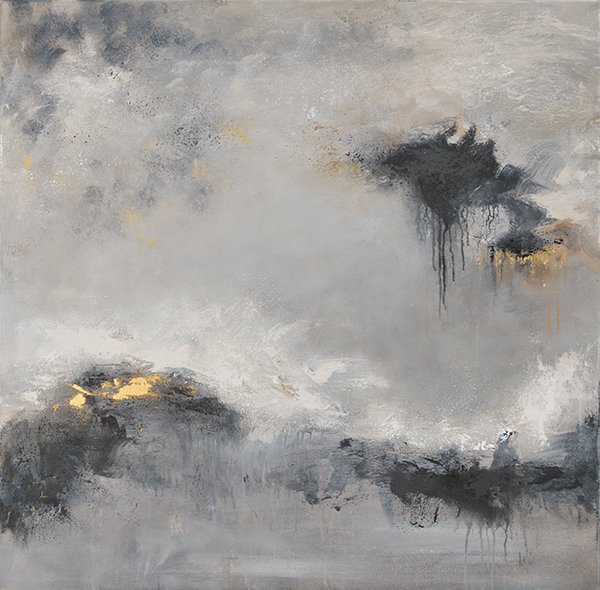
Iron Oxide II, 36” x 36”, Acyrlic & Gold Leaf on Canvas. $2800
3 Different Types of Composition
There are many different types of composition, and this article will cover the ones I like and use the most. Usually, it’s a good idea to have a sense of your composition when you start your painting, however, if you are an intuitive abstract painter you might discover your composition later (as in my case sometimes). Regardless, in the end, your painting will have more impact if composition was considered at some point.
Rule of Thirds
The Rule of Thirds is a composition style in which you divide the canvas into thirds with lines. The lines and where they intersect are all strong focal points. See diagram below:
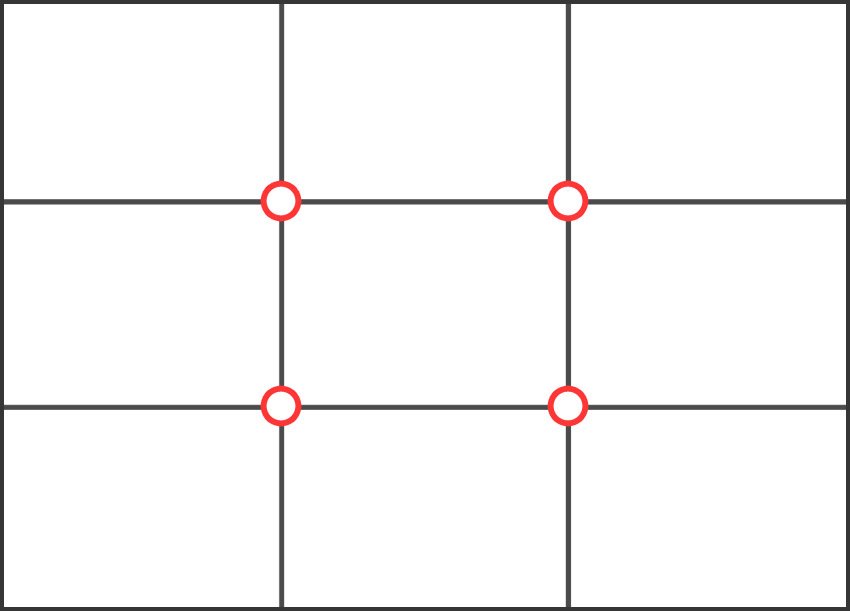
Image from photoshopsupply.com
Central Composition
Central composition is when the focal point is placed in the center of the art piece. This is probably the most recognized and common composition type, and is effective because our eye likes seeing things front and center.
Low Horizon Line
In this composition style, you would put your horizon line low, resulting in a what I call a “big sky” landscape or abstract landscape painting. If you would like to paint a dramatic sky, then this would be a good composition style to choose. To place your horizon line, either use the Golden Ratio calculation (height of painting/1.618), or paint the line so you have about 2/3 of the piece as sky, and 1/3 as ground. Don’t worry about being too exact with any of these measurements, rather, use them as a guideline. Here is an example of one of my low horizon/big sky paintings.
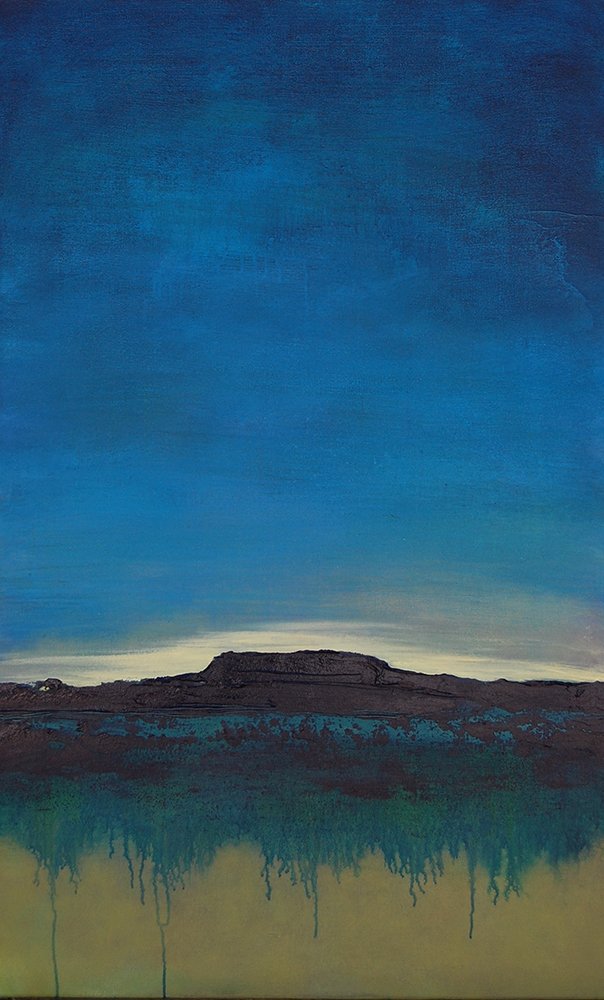
Black Mesa, Acrylic on Canvas, SOLD. Click on image to view more of my paintings.
Conclusion
Planning your composition will not only make painting easier because it gives you a rough plan, but your piece will look better too. I encourage you to try each of these composition types and discover your personal favorites. After you do that, you can mix and match the composition styles. Most importantly, even though you have a plan, be willing to change it as needed. Picking a composition type at the beginning only gets you started with the painting; after that point, you have to make choices about what’s best to create balance in your piece. If you want to learn more about composition and focal points, check out my online course that focuses on color and composition: Abstraction Beyond Boundaries. Have fun and let me know what types you like the best in the comments below!
ABOUT ANDREA CERMANSKI
I am an artist out of Santa Fe, New Mexico who has been painting for almost 30 years. I love to teach first-timers as well as experienced painters who need a creative reboot. My work has been displayed in several galleries around the country, and I have a Bachelor’s in Art History, a Master’s in Art Education, and had my work in a show juried by Judy Chicago. The idea of getting more people painting makes me light up as I want to inspire more people to express their creative selves and tap into a place of joy and calm.
WANT TO LEARN MORE?
- Subscribe and get one of the FREEBIES below!
- Ebook on How to Move From Representational Painting to Abstraction: 5 Transformative Art Lessons
- Take the Quiz: What Abstract Artist are you Destined to Be?
- 8 Colors Every Artist Should Have: My list of BEST colors to buy and pro mixing tips
- Check out My Online Abstract Painting Course
- Read More Painting Tips Blog Posts
- Check out My Paintings & Art Prints for Sale
- Follow Me On YouTube, Instagram, or Pinterest
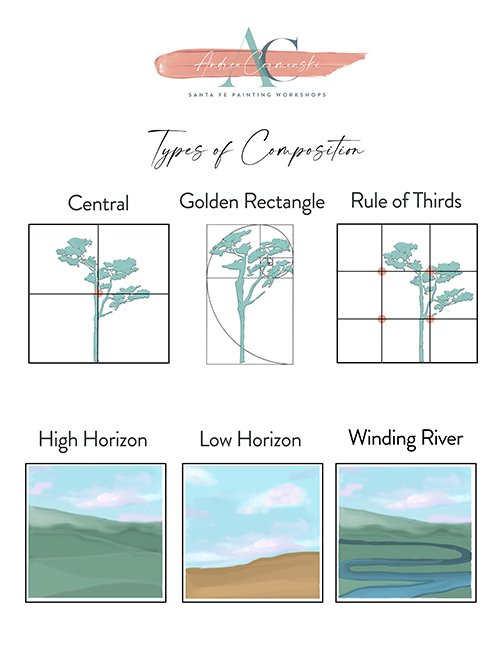
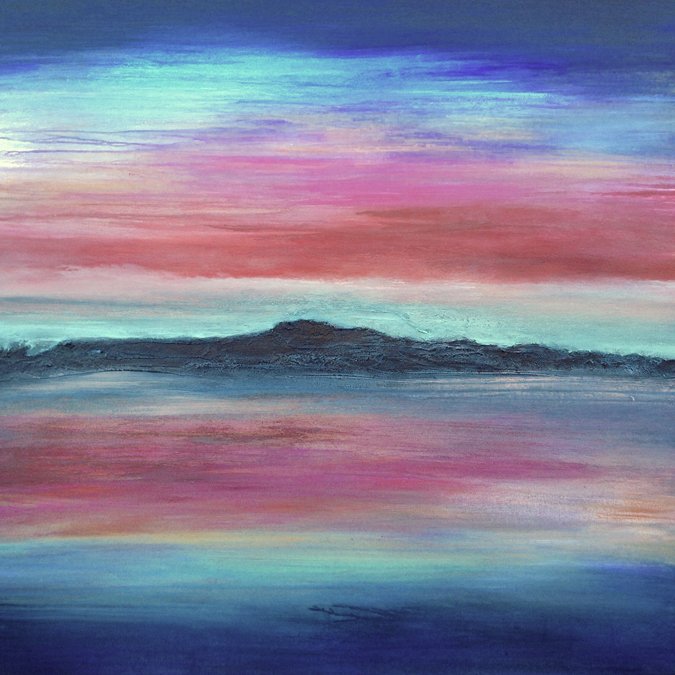
Andrea, this article was fantastic! Using abstract paintings to show that these rules can and do apply to something totally abstract. Thank you so much for teaching us newbies!
So glad this is helpful, Melissa!